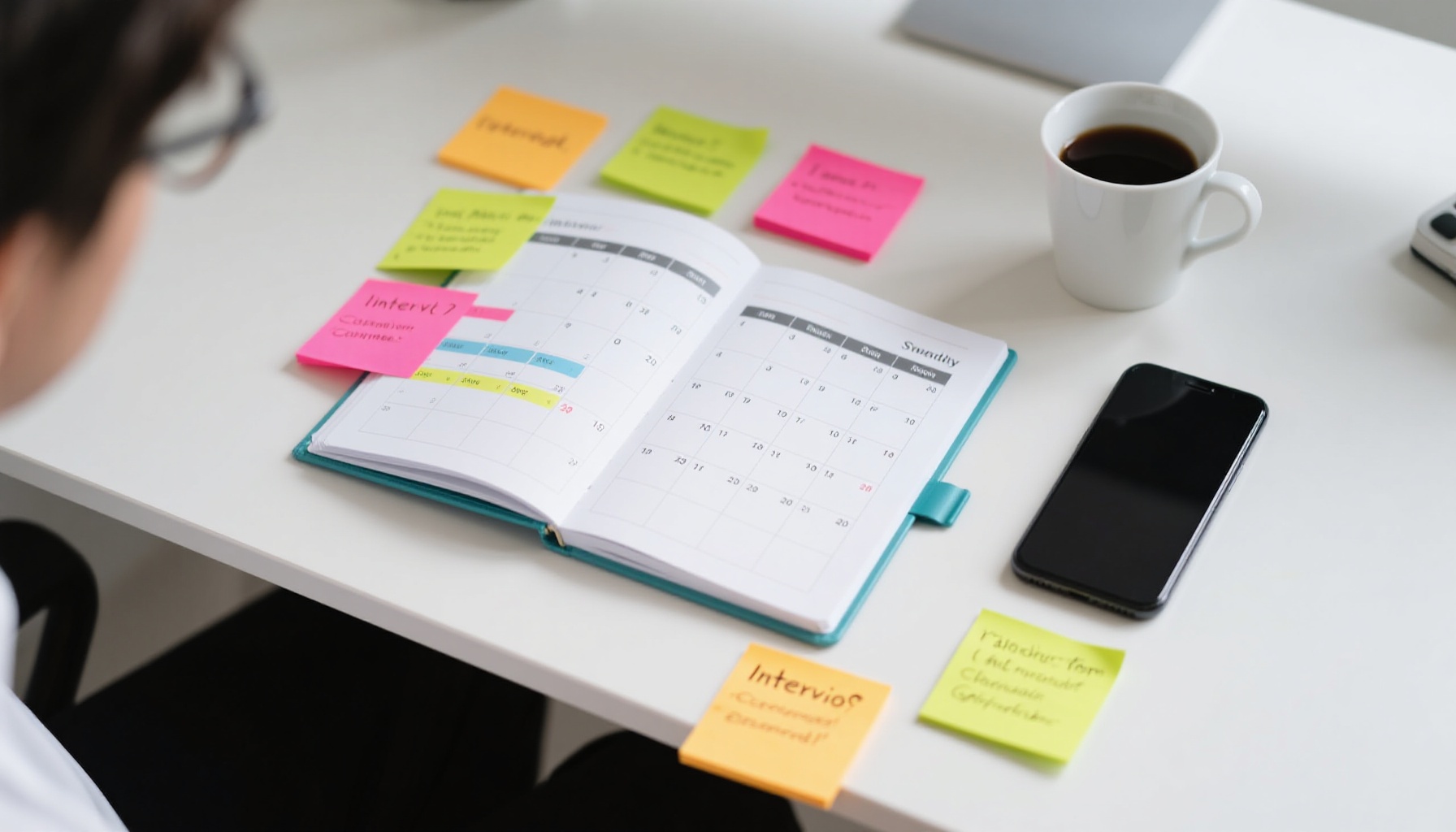The Most Effective Way to Practice for an Interview (2025 Method)
Unlock interview success! Learn the 2025 Method to effectively practice an interview, build confidence, and articulate your value under pressure with a systematic approach.

Walking into an interview room with sweaty palms and a racing heart is a universal experience. Even the most qualified candidates can stumble when faced with unexpected questions or struggle to articulate their value under pressure. The difference between those who excel and those who falter isn't necessarily their qualifications—it's how effectively they've prepared.
The most common approach to interview preparation involves reading through potential questions and mentally rehearsing answers. But here's the truth: this passive preparation method leaves you vulnerable when it matters most. Real interview success requires a systematic approach that transforms your experiences into compelling stories and builds the confidence to handle any curveball question.
Why Traditional Interview Prep Falls Short
Most job seekers make the same critical mistake: they prepare for interviews the same way they'd study for a written exam. They create mental notes, review their resume, and think through potential responses. This approach fails because interviews aren't tests of knowledge—they're performances that require real-time communication skills.
The core problem is the gap between thinking and speaking. You might have the perfect answer in your head, but translating that into a clear, confident verbal response under pressure is an entirely different skill. This is why so many candidates leave interviews thinking, "I should have said…" or "I knew that answer but couldn't get it out clearly."

Additionally, most people practice in isolation, which creates what we call the "feedback void." Without objective input on your delivery, pace, clarity, and content, you're essentially practicing in an echo chamber. You might think you sound great, but have no idea if you're speaking too quickly, using filler words, or failing to highlight your key strengths effectively.
The 2025 Method: Building Your Interview Practice System
The most effective interview preparation method focuses on three core principles: simulation, articulation, and iteration. This isn't about memorizing scripts—it's about developing the ability to communicate your value clearly and confidently in any situation.
Step 1: Create Your Story Bank
Before you practice answering questions, you need to identify and structure your key professional stories. These narratives will become the foundation for most of your interview responses.
Start by cataloging 8-10 significant professional experiences that demonstrate different skills and qualities. For each story, use the STAR method (Situation, Task, Action, Result) to create a clear structure:
- Situation: Set the context briefly
- Task: Explain what needed to be accomplished
- Action: Detail the specific steps you took
- Result: Quantify the outcome and impact
The key is to practice telling these stories out loud until they flow naturally. Many candidates can write compelling stories but struggle to tell them conversationally under pressure.
Step 2: Master the Core Questions
While you can't predict every question, certain categories appear in virtually every interview. Focus your practice on these essential areas:
"Tell me about yourself" is often the opening question and sets the tone for the entire conversation. Your response should be a 90-second professional narrative that connects your background to the role you're pursuing.
Behavioral questions ("Tell me about a time when…") are where your story bank becomes invaluable. Practice adapting your prepared stories to different behavioral scenarios.
Role-specific questions require you to demonstrate your technical knowledge and problem-solving approach. Practice explaining complex concepts clearly and concisely.

Step 3: Simulate Real Interview Conditions
This is where most preparation methods fail. Reading questions silently or thinking through answers doesn't replicate the pressure and dynamics of an actual interview.
Practice speaking your answers out loud in a setting that mimics interview conditions. Sit up straight, maintain eye contact (even if practicing alone), and speak at the pace and volume you'd use in a professional conversation.
Time your responses to ensure they're neither too brief nor too lengthy. Most behavioral questions should be answered in 2-3 minutes, while technical explanations might require more time depending on complexity.
Introduce unexpected elements to build adaptability. Have someone ask follow-up questions, or practice pivoting when a question doesn't perfectly match your prepared stories.
Step 4: Get Objective Feedback
The feedback void is one of the biggest obstacles in effective interview preparation. While practicing with a mentor or colleague is ideal, it isn't always practical or available when you need it most.
This is where technology can bridge the gap. While practicing with a mentor is ideal, it isn't always possible. For instant, data-driven feedback on your delivery—from filler words to pace—an AI tool like AceRound can simulate the experience and provide the objective analysis you need to refine your answers.
Focus on these key feedback areas:
- Clarity and structure: Are your answers easy to follow?
- Pace and delivery: Do you speak too quickly when nervous?
- Filler words: How often do you use "um," "uh," or "like"?
- Content strength: Do you effectively highlight your achievements?

Advanced Techniques for Interview Mastery
Once you've mastered the fundamentals, these advanced techniques will set you apart from other candidates:
The Pivot Strategy
Learn to gracefully redirect challenging questions toward your strengths. If asked about a weakness or failure, acknowledge it briefly, then pivot to what you learned and how you've grown. This demonstrates self-awareness and resilience.
The Specificity Advantage
Generic answers blend into the background. Specific details, metrics, and examples make your responses memorable and credible. Instead of saying "I improved team performance," say "I implemented a new workflow that reduced project completion time by 23% and increased team satisfaction scores from 6.8 to 8.4."
The Question Flip
Prepare thoughtful questions that demonstrate your genuine interest and strategic thinking about the role. The questions you ask are often as important as the answers you give.
Putting It All Together: Your Practice Schedule
Effective interview preparation requires consistent practice over time, not cramming the night before. Here's a proven schedule for optimal results:
Week 1-2: Build your story bank and practice core narratives
Week 3: Focus on common behavioral questions and role-specific scenarios
Week 4: Simulate full interview conditions with feedback and refinement
After you've outlined the key points for your answers, the next step is to practice saying them out loud. You can jump into a free mock interview on AceRound to see how your responses sound and get immediate feedback on their clarity and impact.

Your Path to Interview Confidence
The most effective interview practice isn't about perfection—it's about preparation. By building a systematic approach that combines story development, realistic simulation, and objective feedback, you transform from someone who hopes to survive the interview into someone who confidently demonstrates their value.
Remember, every skilled interviewer was once nervous about their first interview. The difference is that they developed a reliable system for preparation and continued to refine it throughout their career.
The methodology outlined here will serve you whether you're preparing for your first job interview or your fifteenth. The key is consistent practice with objective feedback to continuously improve your delivery and confidence.
Ready to put this system into action? Start with AceRound's free mock interview feature to get immediate, data-driven feedback on your responses. It's a no-risk way to begin implementing everything you've learned and take your first confident step toward interview success.
Your dream job is waiting—now you have the tools to go get it.



